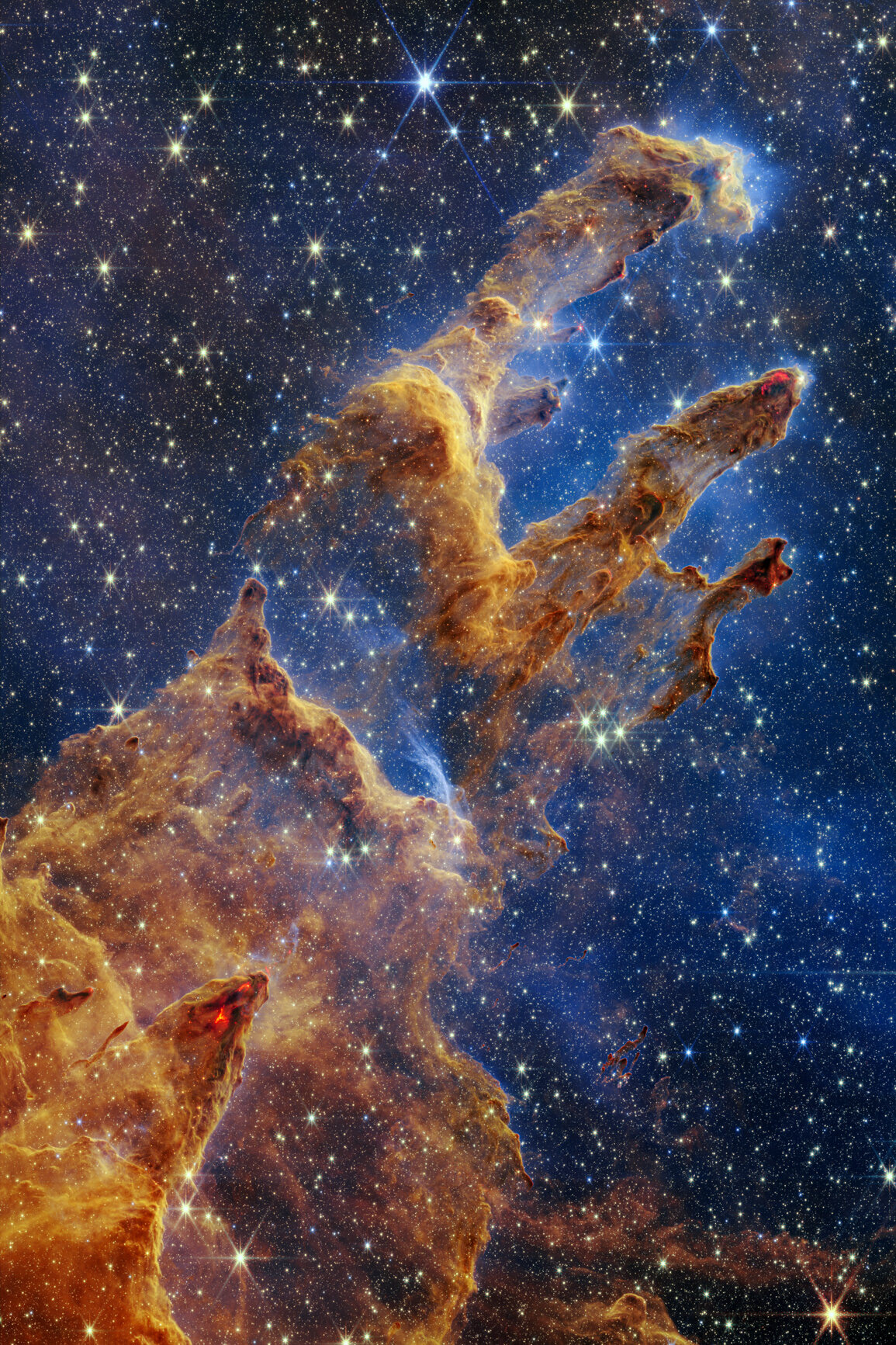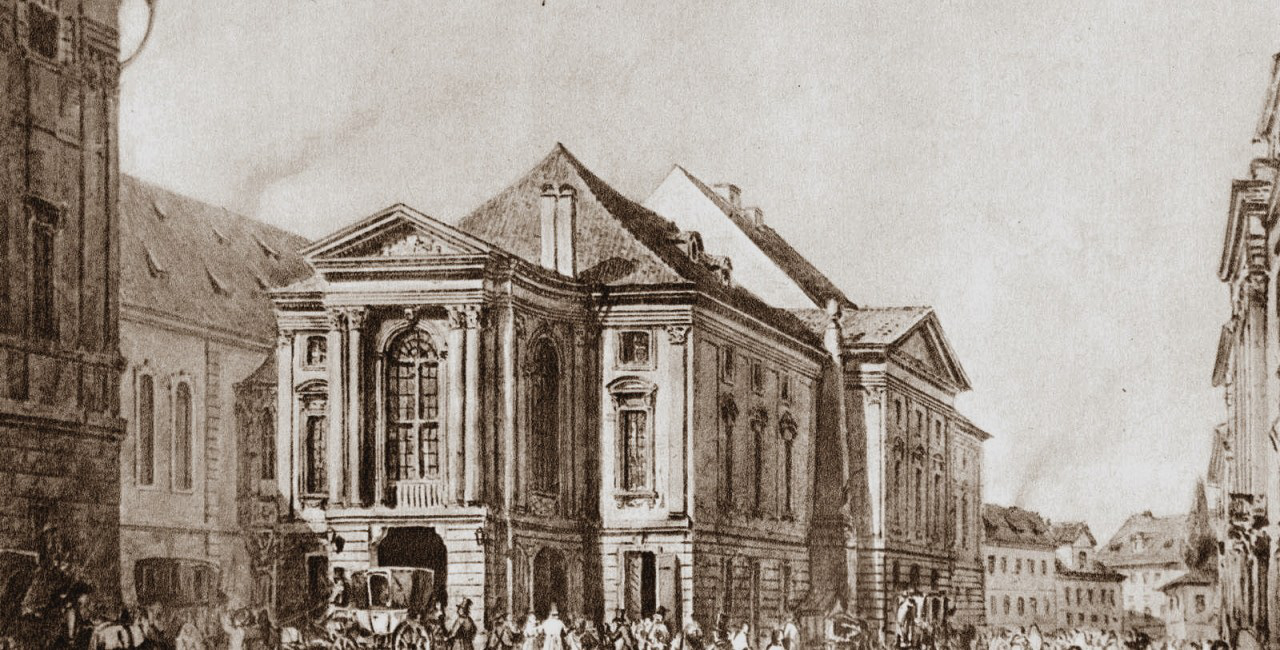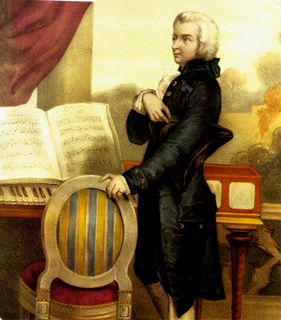Saturday 4th February 2023
7:30pm
St Andrew's Church
Cheadle Hulme
SK8 5ET
Conductor: Alex Robinson
Cello: James Heathcote
***
Programme:
Joseph Haydn (1732-1809)
Cello Concerto in D major
1783
Charles Ives (1874-1954)
The Unanswered Question
1930-1935
INTERVAL
Wolfgang Amadeus Mozart (1756-1791)
Symphony No. 38 in D "Prague"
1786
James Heathcote
Cello
I have played with a number of the UK's leading orchestras, including the Orchestra of Opera North, the Hallé, and the Royal Scottish National Orchestra. I enjoy playing continuo more than anything else, which I first did in a production of Rameau's Castor et Pollux at university. Since then, I have played continuo in Bach's Johannes-Passione, Monteverdi's Vespers and, most recently, in Handel's Saul under Graham Ross. I also really enjoy playing contemporary music, and in 2019 completed a year in the inaugural cohort of Birmingham Contemporary Music Group's NEXT programme. I also put on a concert in 2018 called 'For Cello Alone', which involved the première performances of 5 solo cello pieces by composers from Manchester University and the Royal Northern College of Music.
During my Master's at the Royal Conservatoire of Scotland, studying with David Watkin and John Butt, I researched how audience behaviour has changed over the past century, and explored performance practice of late 19th and early 20th century music. I'm now really interested in putting this research into practice in performance, and a concert I put on in late 2021, 'What is HIP?', was an experiment in this realm, exploring the related ideas of a more generative, free approach to the score and the audience as an active participant.
I also enjoy watching the tennis and playing when I get the chance.
Alex Robinson
Conductor
Alex Robinson is an experienced conductor and harpsichordist. He graduated from the University of Manchester with a first class degree in Music (MusB) and the Royal Northern College of Music with an MMus in Performance at Distinction level (Conducting).
He studied under the student conductor program at Manchester University with Mark Heron & Justin Doyle (RIAS Kammerchor) and later with Clark Rundell at the RNCM. During his studies he was Musical Director for the University Music Society performances of Rameau’s ‘Castor & Pollux’ (2016), conducted Harrison Birtwistle’s ‘Silbury Air’ with the composer in attendance for the NewMusicNorthWest Festival in 2016 and worked with postgraduate composers in various new music projects at the RNCM and with ‘Psappha’.
He is the Music Director of the Haffner Orchestra, the Lake District’s elite vocal ensemble, Furness Bach Choir and the Principal Conductor of the Amaretti Chamber Orchestra and Nottingham Youth Orchestra.
In 2022 he was the Music Director Fellow with Spokane Symphony Orchestra in Washington, USA and Assistant Conductor for English Touring Opera’s HANDELFEST productions and recitals and began teaching as a Professor of Conducting at the University of Salford. In 2023 he will be working with the West of Scotland Schools Orchestra (WSSO), touring with Nottingham Youth Orchestra and performing with Eboracum Baroque.
He has worked with a number of British orchestras as conductor and assistant conductor, including the BBC Philharmonic, the Hallé, Liverpool Philharmonic, Northern Chamber Orchestra, The Old Street Band, Manchester Camerata, Psappha, the Mayson Orchestra as well as a number of opera companies as conductor and as a harpishordist/repetiteur including Radius Opera, English Touring Opera, Heritage Opera and Northern Opera Group. On the international stage, Alex has worked with the Allegra Festival Orchestra in Bulgaria, the Moravian Philharmonic Orchestra and the Prague Philharmonia, CR and Spokane Symphony in Washington, USA. He has worked as assistant conductor for a number of internationally renowned conductors including Sir Mark Elder, Sir Andrew Davies, Vassily Petrenko, James Lowe, Nicolas Collon, Juanjo Mena and Gerry Cornelius.
Notable highlights include working as Assistant Conductor for Heritage Opera and the BBC Philharmonic’s joint world premiere of Alan Williams’’ The Arsonists’. He was music director for Manchester International Festival 2017’s ‘One of Two Stories or Both’ production of a 5 part live broadcast radio drama which appeared on Unity Radio and BBC iPlayer. He was repetiteur and vocal coach during ETO’s HANDELFEST, director of the RNCM Baroque Ensemble and continuo player for a concert with the RNCM Chamber Orchestra and Pablo Besnosiuk (Academy of Ancient Music) and assistant conductor and repetiteur for Tim Benjamin’s ‘The Fire of Olympus’ and recorded an album of continuo improvisations with Lute and Viola da Gamba.
Brigid Hemingway
Leader
Brigid Hemingway (Leader) started playing the violin aged 14. She is also Founder and Leader of The Athenean Ensemble and former Leader of The Gorton Philharmonic Orchestra. She enjoys playing string quartets with her Athenean String Quartet with fellow Amaretti players. She taught mathematics at Cheadle Hulme School for many years and is now a private maths tutor. She has two grown up children and two labradors Billy and Oscar. She is passionate about acting, having come to it rather late in life in 2015. She will be making her debut next week with Altrincham Little Theatre in Terence Frisby’s comedy Funny about Love which runs from Sunday September 25th to Saturday Oct 1st. After that she will be returning to Altrincham Garrick Theatre to play the part of the mother Kate in Arthur Miller’s All My Sons from Monday 14th November to Saturday 19th November.
John Phillips
Leader
John Phillips began studying the violin at the age of 10 and later became a member of the National Youth Orchestra. He read Classics at Fitzwilliam College, Cambridge, where he was a founder member of the Fitzwilliam String Quartet. The quartet subsequently became String Quartet in Residence at the University of York and, whilst there, gave the UK premiere of the Thirteenth Quartet of Shostakovich in the presence of the composer. He has had a special interest in his music ever since.
He later left the quartet to pursue a career in law, supporting his legal studies by freelance playing with the Royal Philharmonic Orchestra, the Philharmonia Orchestra and the London Mozart Players.
He left the law in 2016 to return to music and in 2020 completed the degree of Master of Music in Performance at the Royal Northern College of Music. He is a director and member of the Board of the Hallé Orchestra.
Programme Notes
Joseph Haydn (1732-1809)
Cello Concerto in D major, written in 1783
The second of Haydn’s two great Cello concertos was for many years believed to be the work of another composer and virtuoso cellist, Antonín Kraft. Kraft played in the Esterházy court orchestra under Haydn’s direction. The controversy was cleared up in 1951 when an autograph score bearing Haydn’s handwriting was discovered.
Unlike his first Cello Concerto, which was written in 1765, his second Cello Concerto bears a number of features demonstrating greater compositional maturity. He writes more elaborate parts for the wind players than in his first Cello Concerto, and indeed Haydn asks much more of his soloist in this concerto. The relatively small popularity of this work relative to the first is principally down to it being considerably more difficult to pull off. It is however, more harmonically daring than the first and brilliantly orchestrated.
It is written in three movements, as was the convention for a concerto of this time:
I: Allegro moderato
II: Adagio
III: Rondo (Allegro)
The first movement is a large scale concerto-sonata form which is notable for its introduction of a rather violent new theme in the development section - a structural technique more commonly found in Mozart’s music than in Haydn’s, making it rather special here. There are also several delightful moments written exclusively for the wind players throughout this movement.
An Adagio follows next, but it is no slouch! Haydn treats us to a gently lilting, carefree middle movement as a kind of intermezzo before taking us into a hilarious finale.
Haydn throws in all his humour into the last movement, taking a folk-like theme that rocks back and forth all around the houses! He puts it in the minor key, he keeps the last notes of several phrases hanging and gives us a real flavour of country living. Gone is the elegant decorum of the opening two movements - it’s party time!

Haydn at the Organ

Haydn's Birthplace, Rohrau
Charles Ives (1874-1954)
The Unanswered Question, revised between 1930-1935
Originally conceived as the second part of his Two Contemplations of 1908, Ives revised and separated The Unanswered Question between 1930 and 1935. The work is programatic in nature, with three distinctive musical groups (who are spaced out around the performance venue) fulfilling specific narrative roles.
The strings depict the ‘Silence of the Druids’; the sound of the universe, in its divine stillness. We hear the Trumpet asking the ‘Perennial Question of Existence’ whilst the Wind players act as ‘Fighting Answerers’ - humanity’s unsuccessful attempts at understanding. The question is posed several times and the Wind players attempt to answer it, becoming more and more frustrated with every attempt, highlighted by the ever increasing dissonance we hear until finally they give up, and the piece finishes with question remaining unanswered.

James Webb Telescope view of previously unseen space, taken in October 2022

Charles Ives
Wolfgang Amadeus Mozart (1756-1791)
Symphony No. 38 in D "Prague", written in 1786
Nicknamed the ‘Prague’ Symphony, as it was written in the Czech city in 1786. Mozart had been enjoying considerable success with a run of his opera, Le Nozze di Figaro (The Marriage of Figaro) in late 1786 years and was invited to write a symphony for the Prague audience. There were a number of very talented Bohemian wind players which Mozart had the good fortune to be able to write for in this symphony, explaining its unusually complex wind writing for the time. In fact, there are a number of unusual things about this symphony. It’s in three movements (fast-slow-fast) - the Czech audiences had not come to delight in the four movement structure (fast-slow-minuet-fast) nearly as much as the Italians had at this point in time. The opening movement has, unusually for this period, a very elaborate introduction, with terrifying material that would later be reworked into much of the Overture and ‘Commendatore’ scene of Don Giovanni. Each movement is also conspicuously constructed in sonata form. Clearly then, this is a curious work!
The first movement begins with the aforementioned drawn-out introduction which sets the stage nicely for the operatic flavours to follow. Mozart constructs the first theme out of small fast cells, manipulating them in a manner more akin to Haydn, using them to construct harmonically driven phrases by splattering them around the ensemble. His second theme rolls along in a circular motion, with the violins and bassoons duetting. Some commentators have noted that this movement is even longer (if you observe both the repeat marks) than even the opening movement of Beethoven’s Eroica!
By contrast, the second movement lilts along beautifully, elegantly gliding up and down with chromaticism.
The finale is real party music. Easily the lightest movement of the three, Mozart gives us plenty of pretty solo wind section moments juxtaposed with a reminiscence of the opening Don Giovanni terror from the first movement introduction. Mozart’s operatic prowess comes to the fore throughout, presenting us with a series of comic characters.

The premiere of Mozart's Le Nozze di Figaro in Prague

Mozart in Prague
St Ann's Hospice
St Ann’s Hospice is a charity which cares for thousands of people with life-limiting illnesses every year. The hospice provides a free service to patients, carers and their loved ones from two sites in Greater Manchester, they also have a range of outreach services, supporting patients in the local community and their own homes.
Around a third of St Ann’s funding comes from the NHS, the rest from donations and the kind support of people who raise money to help patients and their families. Every penny makes a real difference to those who really need it–at a time when they need it most.
In order for St Ann’s to continue to provide specialist care to patients and their families, they need to raise £20,000 a day.
For more information, please visit www.sah.org.uk
Our hospice in Heald Green is now over 150 years old, as beautiful as this site is and as truly amazing the care provided is – the building is sadly no longer fit for purpose. Help us on our journey to build a brand-new purpose-built hospice so we can continue to provide outstanding care and support to individuals for many more years to come - https://newhospice.sah.org.uk/
Concert sponsored by Dr. Downing Music
